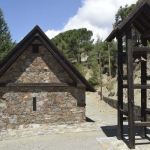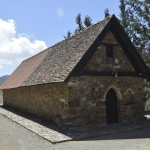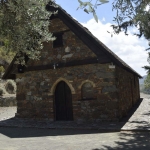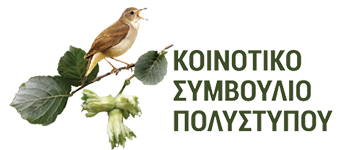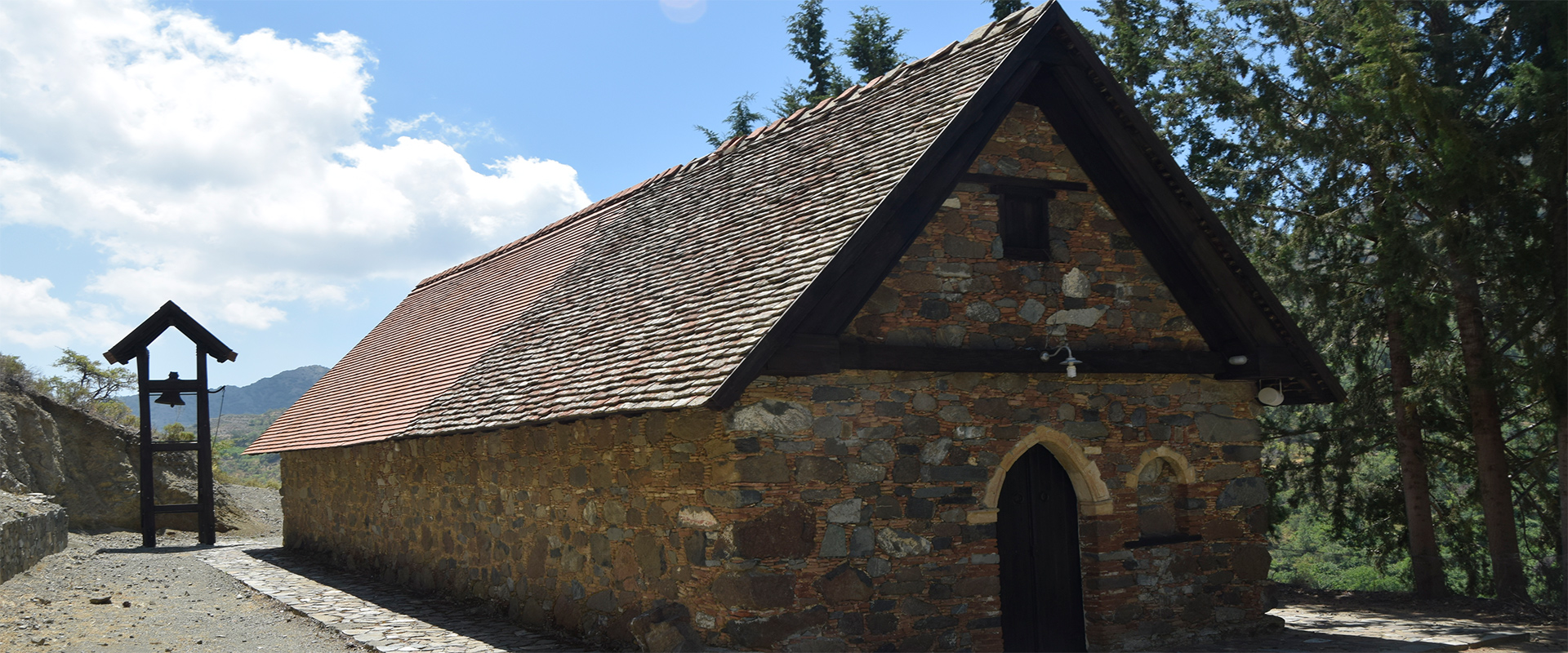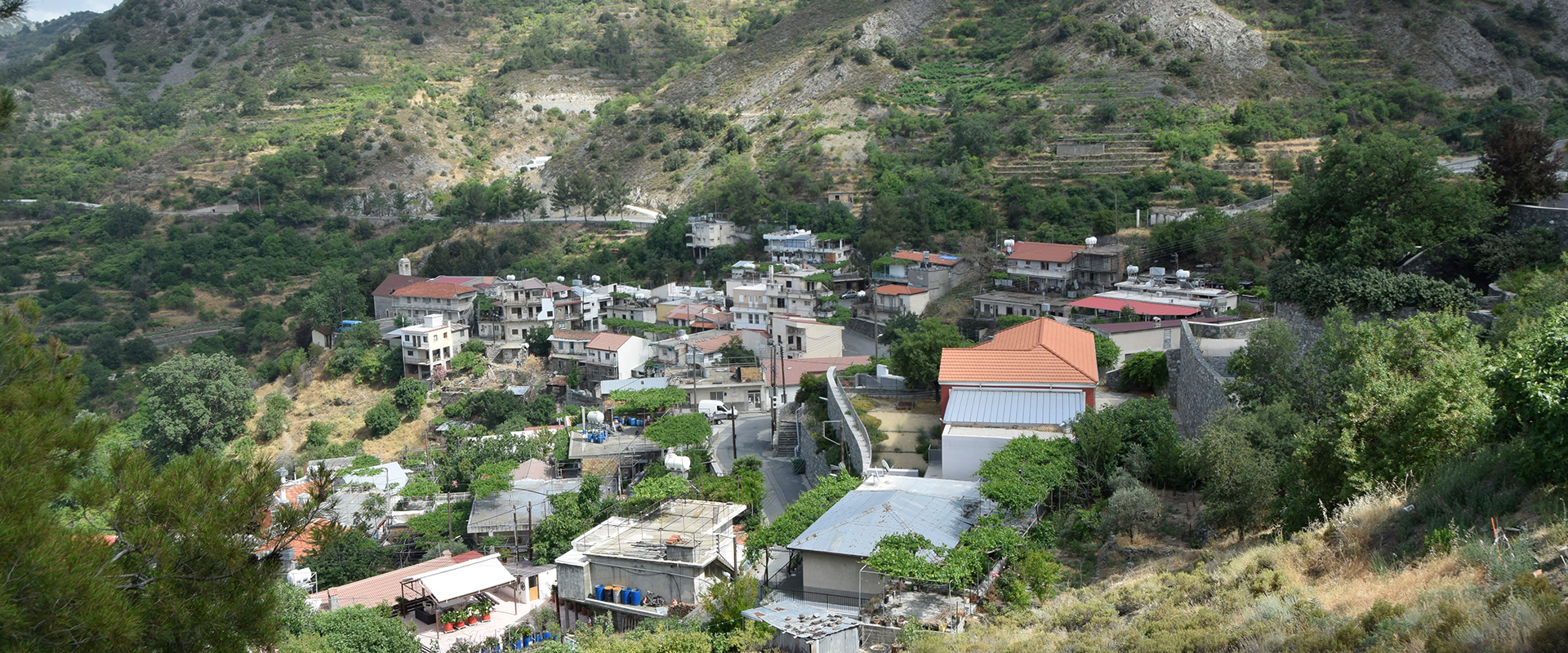Griva Digeni 9
Churches
Church of Saint Nicolaos
The unique church in Polystipos is the holy church of Saint Nicolaos, bishop of Myra in Lycia, the thaumaturge saint of sea-men and permanent protector of the small community of Polystipos. The church as it is today was built between 1908 and 1912. (It began in Spring 1908 and was completed in 1912). It was inaugurated on the 2nd November 1952 by the Eparch of Kyreneia, l. Kyprianos Kyriacides and priest Papa-Nicolas Konstantis and his wife Paraskevi from the neighboring village of Livadia Pitsilias.Its style is considered “Frankobyzantine” and that unfortunately seems incompatible with the rest of the churches in the surrounding areas of north Pitsilia of Troodos, where all churches have wooden ogive roofs and flat hamose roof-tiles.The previous church dedicated to Saint Nicolaos was located at the same area and it was almost 14 meters long and 5 meters wide and 8 meters high. The new church was at first built circumferentially around the initial church since 1908. When the church was completed in 1912, the inhabitants celebrated Easter in 1912 at the old church and then demolished it, since the new church was already completed and the old church was part of its interior.Right after the demolition of the old church, its iconostasis and all its icons were placed in the new church. The old church was built between 1832 and 1834. Even before the first church was built there, a small one-roomed ancient church dedicated to Saint Nicolaos, with wooden ogive roof. This small church was decorated with murals possibly from the 15th century.
We have not mentioned that the church is located on the southeastern part of the village, on a hard hammer-dressed rock. 20 years ago the iconostasis of the church was completed, with additions to the old one.The thaumaturge lar icon of Saint Nicolaos is kept in the seraglio built in 1845. The small ancient icon was transferred at the beginning of the 20th century at the Holy Eparchy of Keryeia and was kept there. The icon depicting Saint Nicolaos on the iconostasis of the church and it silver-plated, was created by Solomos Fragoulides in 1954.Most of the great icons on the iconostasis (Christ, Virgin Mary, Prodromos, Saint Vassilios, Saint Varvara, Saint Tryfonas, Assembly of the Taxiarchs) were created at the end of the 19th century by Theodorides (Theodossios Theodorides). The Crucifixion, the Apostolical and many of the smaller icons depicting the twelve celebrations were also created by Theodossios Theodorides. Some of the latter icons were created during the 15th century. The icons depicting the Birth and Christening of Christ are worth seeing.The bust of Saint Nicolaos decorates the external wall at the right of the south entrance of the church. The bust was created by the teacher Christodoulos Kanthos in 1911.This thaumaturge icon is worshiped by many Christians that deeply believe and ask for the Saint’s help, who was a pioneer in matters of charity and protected the helpless.The church celebrates his memory and honors Saint Nicolaos with a festival on his name day, on the 6th of December.The inhabitants of the village and of the surrounding areas worship Saint Nicolaos. This is also indicated by the fact that many boys are given the name Nicolaos.It is certain that when we ask for his help with deep faith and devotion, he will grant us with his help.
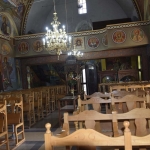
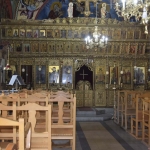
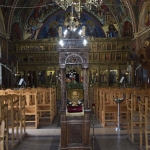
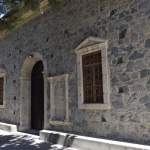
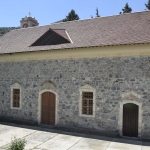
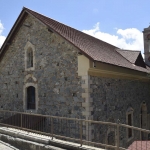
Chapel of Apostle Andreas
The only chapel in Polystipos that still remains is the chapel dedicated to Apostle Andreas.It is located outside of the village, on the north, almost 300 meters away from the exit of the village, near the road leading to the neighboring village of Levadia and to Nicosia.It is the ultimate relic of an ancient monastery dedicated to Apostle Andreas in Polystipos as it was known. The building was destroyed years ago. The chapel of Apostle Andreas was the “universal”, namely the established church of the Monastery that ceased being a Monastery around 1898. The Monastery was at its peak until 1700. An earthquake in 1708 and a pox epidemic dispeopled the Monastery. The small church was decorated with murals of the 16th century (around 1520). Priest Papa-Ioannis Papa-Petrou from the neighboring village of Levadia Pitsilias thought it would be better to wholly destroy the church in 1867, as a part of its southern wall was fit to drop. He then built the church we see today, which is bigger than the previous one. It is almost one meter wider and almost two meters longer. The new church was completed in May 1869. The remains of murals that used to decorate the internal part of the older church can be found on some parts of the external walls of the new church. The new church was inaugurated in 1877 by the Eparch of Kyreneia, Meletios. After the Monastery’s destruction in 1898, the Monastery and its property became ownership of the Holy Eparchy of Keryneia, as the Monastery was administered by the Eparchy of Keryneia. The fields owned by the Monastery were ever since rented to inhabitants of the surrounding area. In 1936 the Holy Eparchy of Kyreneia sold the largest part of the Monastery fields on auction to a group from the village of Alona.The chapel today hosts a service 4 times a year. What is more, the sacrament of christening for many children.The church is protected by the Antiquity Department as an ancient Byzantine monument.It is a one-roomed church, with a wooden roof with hamose tiles. This type of churches was established in the area of Troodos centuries ago. It is interesting as far as worship, art, religion, history and folklore are considered. The iconostasis of the church, created during the 18th century is amazing, one of the greatest in Cyprus, in small churches in the region. Specifically, the Crucifixion (1700) causes the pilgrim awe, worship, devotion and contemplation.The small icons depicting the twelve celebrations located high on the iconostasis were created during the 16th, 17th and 18th century, as well as the main icons on the iconostasis (Christ, Virgin Mary, Prodromos). The lar icon of Apostle Andreas is thaumaturge and was created in 1851 “Invocation of Priest Petros and of everyone in his establishment”. Saint Andreas is honored in the surrounding villages and has performed many miracles to patients that ask for his help.
Entering the small church dedicated to Apostle Andreas in Polystipos, one feels awe and worship. The soul feels to be closer to the Divine Creator and to be in communication with Him. One feels small and deeply contemplates, experiences the majesty of God and wished to become a better believer, virtuous with the help of Saint Andreas. Stepping out of the church, having worshiped the Saint, one witnesses a miracle. A green landscape covered in trees. Tall walnuts emerge, especially at the riverbanks, while the music of the birds prolongs the feelings aroused in the church. The paradisiacal setting is extraordinary and the singing of the nightingales during spring is an ode to the Creator. You do not wish to leave but your stomach might command you. Pass from the three age-long olive trees accompanying Saint Andreas for centuries and say goodbye to the two enormous acorn trees that have been the posts of Apostle Andreas in Polystipos for centuries, here in the north part of Pitsilia. Before departing, you give promise to the oak trees that serve as posts for Apostle Andreas that you will return as soon as possible, especially on the 30th November when he is celebrating.
He will come down from his throne on that day, go to the churchyard if the weather is good and will welcome you and the rest of the pilgrims. He will give you his blessings so that they will follow you for all your life…
He will be waiting for you…
